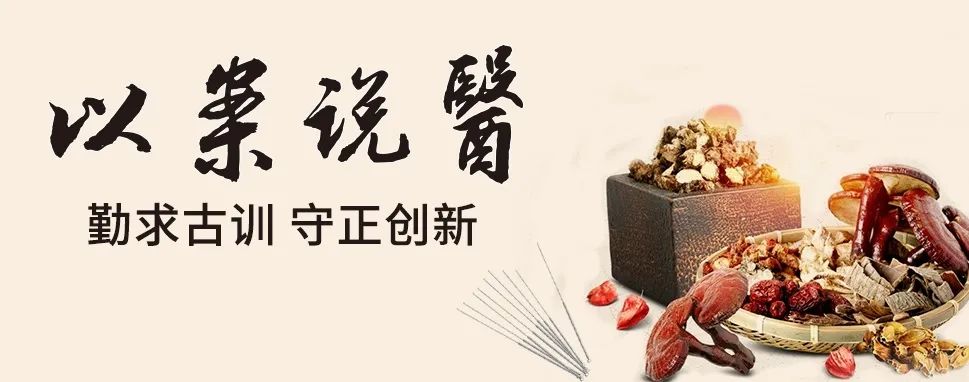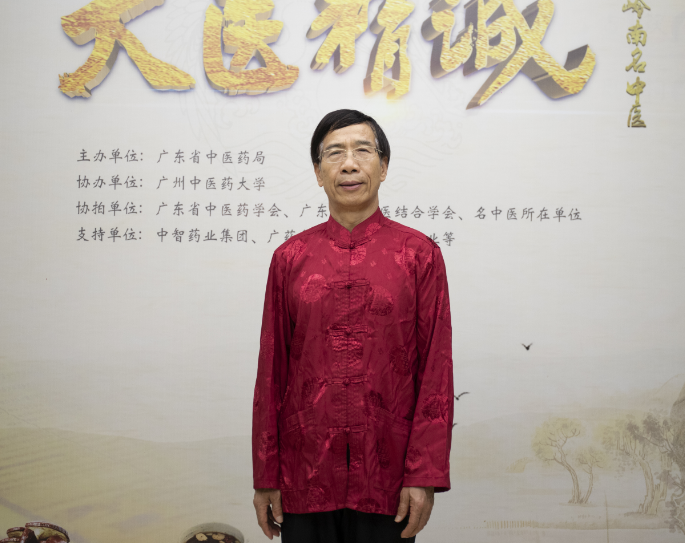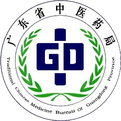

▲Weng Fengquan, a renowned TCM physician in Guangdong Province, is the honorary director of the Wuyi Traditional Chinese Medicine Hospital in Jiangmen City and a chief physician in orthopedics. He is a leader in TCM orthopedics in Guangdong Province and a master’s supervisor at Hunan University of Chinese Medicine. With over 40 years of clinical practice, teaching, and research in TCM orthopedics, he specializes in using TCM techniques to treat fractures, neck, shoulder, waist, and leg pain, as well as various types of bi syndrome and atrophy syndrome. He has published more than 30 papers at national and provincial levels and authored one monograph.
Medical cases are records of clinical practice in TCM, reflecting the specific application of principles, methods, formulas, and medicines during diagnosis and treatment. The medical cases of renowned physicians throughout history are treasures in the TCM repository. We introduce the “Case Study in TCM” column to inherit the essence and inspire our generation for mutual progress.
Basic Information
Zhong, male, aged 86.Course of IllnessHe has a history of low back pain with radiating pain in the left lower limb for 1 year. One year ago, due to overexertion, he experienced significant low back pain and radiating pain in the left lower limb, which worsened after walking about 100 meters, making him unable to walk. Resting alleviated the pain, but any slight positional change while lying down would trigger unbearable radiating pain in the left lower limb, making it difficult to sleep at night. A lumbar CT scan at that time indicated: L5/S1 disc herniation with spinal canal stenosis. Oral medication provided slight relief but pain persisted, worsening after exertion and affecting normal life. Two weeks ago, due to overexertion, the symptoms worsened, with low back pain described as sharp and localized, significantly worse at night than during the day, with limited rotational movement.Initial DiagnosisCurrent Symptoms: White tongue coating, dark purple tongue body, engorged sublingual veins, and a wiry pulse.Diagnosis and TreatmentTCM Diagnosis:Low back bi syndrome.TCM Pattern:Kidney and liver deficiency with blood stasis obstructing the meridians.Treatment Method:Tonify the kidney, invigorate blood circulation, and unblock the meridians to relieve pain.Prescription:Xuchangqing (Xuchangqing) 15g, Xuduan (Teasel Root) 30g, Vinegar-Processed Yanhusuo (Corydalis) 15g, Shinan (Stone Herb) 15g, Danshen (Salvia) 30g, Jixueteng (Sanguisorba) 30g, Duhuo (Angelica) 10g, Duzhong (Eucommia) 30g, Sangjisheng (Mulberry Mistletoe) 30g, Banfenghe (Maple Leaf) 30g, Gouji (Cibotium) 15g, Jianghuang (Turmeric) 12g, Chuan Niuxi (Achyranthes) 15g, Chenpi (Dried Tangerine Peel) 10g, for 14 doses, decocted in water, one dose per day.Follow-up ProcessEffect:After 3 weeks of comprehensive treatment, the patient’s low back pain symptoms have basically disappeared, and the radiating pain in the left lower limb has also largely resolved, allowing him to adapt to basic daily life and work. Follow-up after 3 months showed no recurrence.
Comments:
Diagnostic Thought:Most physicians currently believe that low back pain is a mixed condition of deficiency and excess in TCM, related to the Kidney Meridian (Foot Shaoyin) and Bladder Meridian (Foot Taiyang), as well as the Liver Meridian (Foot Jueyin). Clinical research on TCM comprehensive treatment of lumbar disc herniation suggests that it is associated with wind, cold, dampness, heat, stasis, and deficiency. Most patients present with a combination of cold-damp or wind-damp-heat. When the body’s righteous qi is insufficient or when injured, external pathogens can invade the body, leading to disease. From the perspective of the overall etiology, insufficient righteous qi is a key factor in the onset of lumbar disc herniation. As stated in the “Suwen Yipian: Acupuncture Methods,” “When righteous qi is present within, evil cannot invade.” This condition is primarily seen in middle-aged and elderly patients, who are precisely at a time when their righteous qi gradually declines. Therefore, it can be comprehensively analyzed that insufficient righteous qi is an important factor in the onset of lumbar disc herniation. Thus, while tonifying deficiency, it is also necessary to expel evil. Based on each patient’s experience of wind, cold, dampness, heat, and stasis, targeted treatment methods should be employed to help eliminate clinical symptoms as early as possible. Therefore, the treatment principle should adopt the approach of “tonifying the righteous and expelling the evil, treating both internally and externally.”
As stated in the “Suwen: Bi Lun,” “Cold qi is the cause of painful bi syndrome.” The upper and lower limbs are pathways for hand and foot acupoints, where cold and dampness are most likely to invade and linger. When cold qi enters the meridians, it stagnates, causing blood to stagnate and not flow, with more yin than yang, leading to more severe pain and localized symptoms. The prescription by Elder Weng is designed for yang deficiency and excess yin with cold obstruction. Currently, wind and cold are mixed in the blood vessels, and evil stagnates in the meridians, causing nutrient qi to not flow; only warming and unblocking can disperse the cold. Xuchangqing (Xuchangqing) 15g, Xuduan (Teasel Root) 30g, Vinegar-Processed Yanhusuo (Corydalis) 15g, Shinan (Stone Herb) 15g, Danshen (Salvia) 30g, Jixueteng (Sanguisorba) 30g, Duhuo (Angelica) 10g, Duzhong (Eucommia) 30g, Sangjisheng (Mulberry Mistletoe) 30g, Banfenghe (Maple Leaf) 30g, Gouji (Cibotium) 15g, Jianghuang (Turmeric) 12g, Chuan Niuxi (Achyranthes) 15g, Chenpi (Dried Tangerine Peel) 10g. In this formula, Jixueteng (Sanguisorba) is warm and disperses internal cold while nourishing blood, allowing blood to flow and dispelling wind; Banfenghe (Maple Leaf) disperses wind in the blood; Duhuo (Angelica) dispels cold in the blood; the cold-congealing evil cannot be dispelled without Gouji (Cibotium), Duzhong (Eucommia), and Sangjisheng (Mulberry Mistletoe), as Gouji has sharp qi that unblocks the meridians and benefits the joints, reaching the disease site directly, while Duzhong and Sangjisheng dispel yin-cold, eliminate phlegm, and warm the waist and knees. Additionally, Xuchangqing, Vinegar-Processed Yanhusuo, Shinan, Chenpi, and Jianghuang also serve to expel wind, disperse cold, unblock the meridians, and relieve pain.
(Compiled by: Chen Weiming)
Important Notice:
Due to individual differences in constitution and condition, the herbs and dosages in this case are only applicable to the patient at that time. Without TCM diagnosis and treatment, do not replicate the prescription and dosages in this case. Readers in need should seek treatment at a regular hospital to avoid delaying their condition. ■
Source: Jiangmen City Wuyi Traditional Chinese Medicine Hospital, Expert Advisor: Weng Fengquan, Chief Physician推荐阅读





